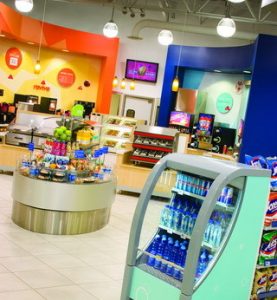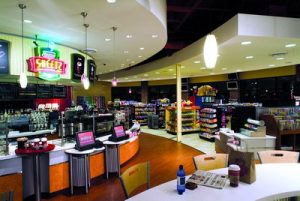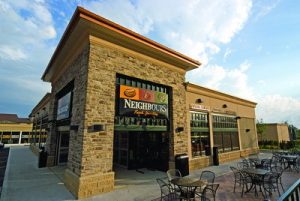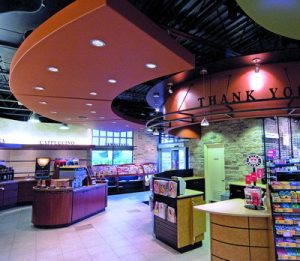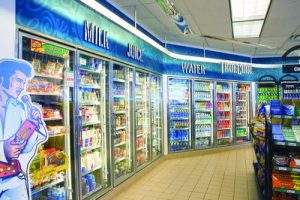It’s easy selling gas these days, even at ridiculously high prices. What seems to be much more challenging for gas station operators is getting people into their adjoining convenience stores.
Pay-at-the-pump technology is making it easier for customers to buy gas without walking through the door. And higher gas prices are taking a more sizable bite out of each transaction, leaving less disposable money for that carton of milk, magazine or slushy. Besides, margins on such c-store staples as gasoline and tobacco have shrunk in recent years.
And as if those challenges to U.S. c-store operators are not enough, a brash – and big – new competitor will enter the fray this month, when British-based food retailing giant Tesco begins rolling out its first Fresh & Easy Neighborhood Markets in Southern California, Nevada and Arizona.
Though Tesco has been mum about the specifics of what its new stores will look like (and whether any of them will sell fuel), the company has said its outlets will average 10,000 square feet. While that’s twice the size of a typical American c-store, the Fresh & Easy chain’s emphasis on convenience and ready-to-go meals will make it a competitor to c-stores and supermarkets alike. With a total of 50-plus sites slated to open in the Southwest U.S. within the next few months – and up to 500 possible across the country within a few years – the British are coming, indeed.
Upgraded Interiors
Advertisement
To counteract these and other competitive challenges, c-store operators continue to refine their efforts to get customers through the doors by upgrading their spaces and broadening their product mixes.
“People typically stop at a c-store because ‘something’s empty or something’s full,’ ” says Tom Ertler, prototype director at retail design firm WD Partners (Dublin, Ohio), whose clients include TravelCenters of America’s Goasis chain and The Home Depot Fuel c-stores. “They may stop because of competitive fuel prices, a convenient location or the need to use the restroom. But to get them to spend any time and money in the store itself, the retailers have got to make those spaces easy to shop, clean and visually appealing.”
Many of those in-store upgrades are aimed specifically at bringing more female customers in. Consequently, many c-store operators have been improving their merchandise offers beyond the “Cokes and smokes” that traditionally drew in blue-collar males, say designers at Chute Gerdeman Retail (Columbus, Ohio), which has worked for such c-store clients as 7-Eleven, Sheetz and Thorntons.
“To attract more female customers, including moms with kids, c-stores are upgrading their food offerings across the board, with fresh, ready-to-eat meal solutions,” says Adam Limbach, Chute Gerdeman’s vp, brand communications. “In conjunction with those improvements in their merchandise mix, the stores are also upgrading their decor, and updating the fixtures, materials, lighting and graphics.”
Being a Good 'Neighbour'
Advertisement
Among the companies aggressively implementing those strategies is Petro-Canada, an oil and gas company that also runs more than 1300 c-stores across its home country. The company’s new Neighbours stores, designed by New York-based CBX, sell blended coffees and freshly prepared sandwiches and salads in an environment populated with warm woods, ceramic tile and a rich-toned color palette.
“We worked with Petro-Canada to create a friendly, inviting space that would establish an emotional connection with consumers, and go beyond the old ‘eat-it-and-beat-it’ strategy that used to characterize the c-store sector,” says Joe Bona, president of CBX’s retail division. Ron McIntosh, Petro-Canada’s senior director, new concept brand development, says the overall goal was to create stores with “a substantial, quality look.”
In keeping with those objectives, the store’s exterior features a stone-clad signature entry tower. That stone, which Bona says is intended to convey the look and feel of a classic Canadian lodge, is also used extensively inside the store.
In addition, the stores’ 3500-square-foot interiors feature a visually striking curved food counter, echoed and reinforced by similarly shaped hanging panels overhead. Bona also notes that designers infused the ladies’ restroom – traditionally a major c-store Achilles’ heel – with clean and contemporary finishes, including glass mosaic wall tiles and large oval mirrors. “We paid a lot of attention to the restroom design to help convince female guests that Neighbours is more than a pretty face,” says Bona.
Advertisement
Bona adds that the Neighbours stores incorporate design concepts from other “out-of-category” sectors (fast-food and fast-casual restaurants), including covered entry porches, up-front parking, in-store seating and touchscreen ordering. “Neighbours was designed as if it could become a stand-alone concept identified by consumers as a uniquely different kind of retail store that also happens to be convenient,” he explains.
A New Direction
Petro-Canada has plenty of company in seeking to create break-the-mold retail spaces in reaction to the various market forces roiling the c-store sector. Mergers and consolidations within the ranks of major oil companies, for instance, have sent some franchisees scrambling to find new fuel suppliers and establish new identities for their stores.
Lyden Co., founded in 1919, sold Amoco fuel at its filling stations and c-stores for 78 years. But when BP bought Amoco in the late 1990s, Lyden found itself facing the prospect of having to divest several of its stations, due to overlaps between its outlets and existing BP stations. The company opted instead to switch to Shell as its main fuel supplier under a joint-venture arrangement. It rechristened its old Amoco Fast Check c-stores with a new brand name, TrueNorth.
Now the company is rolling out a second generation of its TrueNorth concept, which was designed in conjunction with Total Image Specialists (Columbus, Ohio). As with Petro-Canada, much of TrueNorth’s efforts are designed to appeal to female customers.
“Women shoppers are used to quality retail experiences, like those they find at Target,” says TrueNorth ceo Geoff Lyden, whose Toledo, Ohio-based company operates about 120 stores. “To offer the c-store equivalent of that, we provide an environment that’s convenient and clean – and safe.”
Design elements that help create a feeling of safety include bright lighting, both at the pump and inside the store, and large storefront windows. “Clear views into the store add to the feeling of security, so we work hard with our managers to prevent the ‘clutter creep’ of promotional signage into the windows,” notes Lyden.
Total Image president Ken Galloway says other women-friendly design cues include “warm and inviting colors throughout the space, along with a perimeter graphics system that easily and quickly guides customers to the various offerings within the store. Those printed panels bear contemporary icons suggesting products to purchase, such as coffee, soft drinks and grab-and-go snacks.”
TrueNorth’s upgraded signage system, more sophisticated color palette and security-conscious layout all make the “A-list” of design features that smart c-store operators are implementing to counter the ongoing onslaught of market challenges rocking their world.
Source list information for the TrueNorth and Petro-Canada Neighbours stores appear below.
TrueNorth
Client: TrueNorth, Toledo, Ohio – Geoff Lyden, ceo; Mark Lyden, president; Marge Richmond, general manager – merchandising
Design: Total Image Specialists, Columbus, Ohio – Linda Agans, project manager and strategist; Carl Riley, senior brand strategist; Chas. Mindigo, senior designer; Bill Witherup, senior merchandiser; Mark Holman, senior lighting designer
Architect: RCI Co., New Castle, Pa.
General Contractor/Ceilings/Lighting: Stackhouse Construction Inc., Orwell, Ohio
Fixtures/Furniture: AJ Construction Co., Girard, Ohio
Flooring: Youngstown Tile, Youngstown, Ohio
Branding Elements/Props and Decs/Signage and Graphics/Wallcoverings and Materials: Total Image Specialists, Columbus, Ohio
Petro-Canada Neighbours Stores
Client: Petro-Canada, Calgary, Alb. – Ron McIntosh, senior director, new concept brand development; Ed Burcher, senior director, Neighbours.
Design: CBX, New York – Rick Barrack, creative director; Joseph Bona, project director; Flavio DiBlasio, project manager; Heath Granis, senior designer
Architect: K. Paul Architect Inc., Oakville, Ont,
General Contractor: ECS Engineering & Construction Ltd., Concord, Ont
Ceramic Tile: Olympia Tile & Stone, Toronto
Fixtures: Shopco U.S.A., Houston
Graphics: Innograph Inc., Whitby, Ont.
Kitchen Ceiling: Armstrong World Industries Inc., Lancaster, Pa.
Laminate: Formica, Cincinnati
Paint: Benjamin Moore, Montvale, N.J.
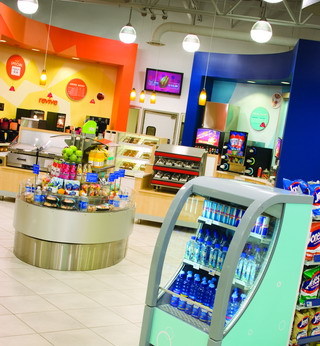

 Photo Gallery1 week ago
Photo Gallery1 week ago
 Headlines7 days ago
Headlines7 days ago
 Headlines1 week ago
Headlines1 week ago
 Headlines2 weeks ago
Headlines2 weeks ago
 Headlines1 week ago
Headlines1 week ago
 Designer Dozen2 weeks ago
Designer Dozen2 weeks ago
 Designer Dozen5 days ago
Designer Dozen5 days ago
 Headlines7 days ago
Headlines7 days ago
